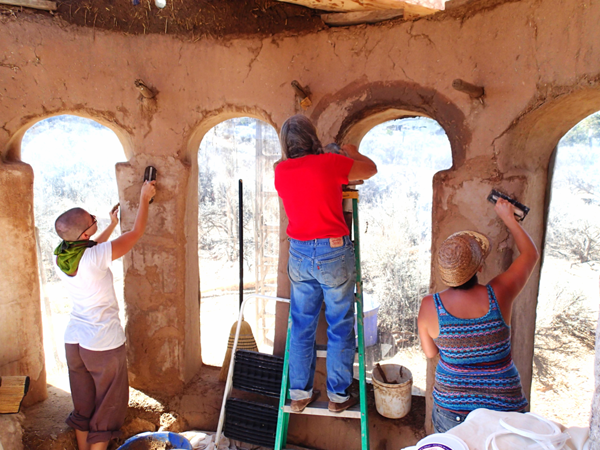Biochar, a highly porous material produced from plant waste, is mostly used in agriculture as a soil conditioner, in livestock farming as a feed supplement, and in metalworking as a reducing agent. The latest developments at the Ithaka Institute are now focusing on its use as a building material.
earth plaster
10 Beautiful and Useful Things You Can Create with Earth Plaster
People are often fascinated by the structure of my earthbag home, but in truth that was the easy part. It’s the plaster that is an art. And a science. At times I thought it might have even been witchcraft. Because it took me just 6 weeks to build my earthbag house, but almost 2 years to get my plaster sitting beautifully on my walls without cracks or bits of it falling off.
How to Test and Make Exterior Render using Cow Poo

“It can take about two weeks to get your tests ready for this particular mix so make sure to leave enough time. You are going to need to do a number of tests before you find your ideal render, as the materials and the way they react to the environment are going to be different everywhere in the world. Even if you are living in a similar climate to us here, I would not recommend copying our mix as the clay, sand and poo you will be using will not likely be the same.”
Kyle’s Crazy House: Earthen Plaster on the Gnestle
“In this video, and the next few I post, I will be showcasing the buildings of Kyle Yoder, who’s lived at Dancing Rabbit ecovillage for several years and is known for the organic forms of his design. One of the great things about natural building is the freedom it gives builders to think beyond the 90 degree angle. Kyle’s just begun the finish plaster of his own home, the Gnestle, and we’re going to get a peek at his work and a little explanation from the builder himself.
Earthen Plasters: The healthiest and most beautiful way to finish your home

“No matter what material you build your house with, the finishes will always be the most visible part both inside and out. For thousands of years people have used natural materials to improve the appearance of their buildings, to protect their buildings from the elements, and to hide the rougher qualities of their walls. Despite advances in technology and industrial methods of production, most houses are still finished with natural plasters and renders. In this article we’ll explore the three most common types of plaster, discuss their benefits and limitations, and talk about why they’re the best option for home finishings, not only in natural homes, but in conventional homes too.

